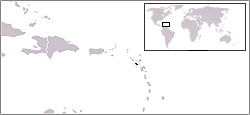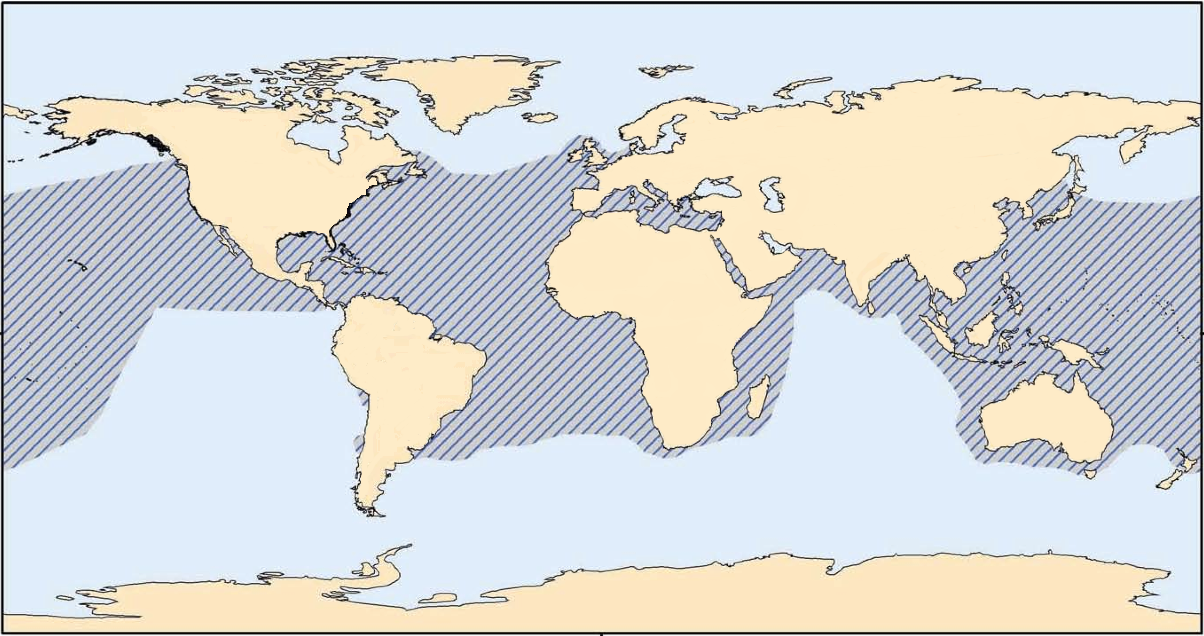|
List Of Amphibians And Reptiles Of Montserrat
This is a list of amphibians and reptiles found in the British overseas territory of Montserrat, located in the Caribbean Lesser Antilles. The continuing eruptions of the Soufrière Hills volcano have devastated much of the island. Amphibians There are three species of amphibian on Montserrat, one of which was introduced.Malhotra & Thorpe 1999 also includes '' Eleutherodactylus martinicensis'' in its species checklist for Montserrat, at p. 117, but this is not supported by the main text, which describes only three amphibian species for the island, nor do other sources support the presence of this species. Frogs (''Anura'') Reptiles Including marine turtles and introduced species, there are 15 reptile species reported on Montserrat. Two are endemic: the Plymouth Anole ('' Anolis lividus'') and the Montiserrat Galliwasp (''Diploglossus montisserrati''). Turtles (''Testudines'') Lizards and snakes (''Squamata'') Notes References Note: All species listed above are suppor ... [...More Info...] [...Related Items...] OR: [Wikipedia] [Google] [Baidu] |
Bufo Marinus
The cane toad (''Rhinella marina''), also known as the giant neotropical toad or marine toad, is a large, terrestrial true toad native to South and mainland Central America, but which has been introduced to various islands throughout Oceania and the Caribbean, as well as Northern Australia. It is a member of the genus '' Rhinella'', which includes many true toad species found throughout Central and South America, but it was formerly assigned to the genus '' Bufo''. The cane toad is an old species. A fossil toad (specimen UCMP 41159) from the La Venta fauna of the late Miocene in Colombia is indistinguishable from modern cane toads from northern South America. It was discovered in a floodplain deposit, which suggests the ''R. marina'' habitat preferences have long been for open areas. The cane toad is a prolific breeder; females lay single-clump spawns with thousands of eggs. Its reproductive success is partly because of opportunistic feeding: it has a diet, unusual a ... [...More Info...] [...Related Items...] OR: [Wikipedia] [Google] [Baidu] |
Eretmochelys Imbricata
The hawksbill sea turtle (''Eretmochelys imbricata'') is a critically endangered sea turtle belonging to the family Cheloniidae. It is the only extant species in the genus ''Eretmochelys''. The species has a global distribution, that is largely limited to tropical and subtropical marine and estuary ecosystems. The hawksbill's appearance is similar to that of other marine turtles. In general, it has a flattened body shape, a protective carapace, and flipper-like limbs, adapted for swimming in the open ocean. ''E. imbricata'' is easily distinguished from other sea turtles by its sharp, curving beak with prominent tomium, and the saw-like appearance of its shell margins. Hawksbill shells slightly change colors, depending on water temperature. While this turtle lives part of its life in the open ocean, it spends more time in shallow lagoons and coral reefs. The World Conservation Union, primarily as a result of human fishing practices, classifies ''E. imbricata'' as critically ... [...More Info...] [...Related Items...] OR: [Wikipedia] [Google] [Baidu] |
Green Turtle In Kona 2008
Green is the color between cyan and yellow on the visible spectrum. It is evoked by light which has a dominant wavelength of roughly 495570 nm. In subtractive color systems, used in painting and color printing, it is created by a combination of yellow and cyan; in the RGB color model, used on television and computer screens, it is one of the additive primary colors, along with red and blue, which are mixed in different combinations to create all other colors. By far the largest contributor to green in nature is chlorophyll, the chemical by which plants photosynthesize and convert sunlight into chemical energy. Many creatures have adapted to their green environments by taking on a green hue themselves as camouflage. Several minerals have a green color, including the emerald, which is colored green by its chromium content. During post-classical and early modern Europe, green was the color commonly associated with wealth, merchants, bankers, and the gentry, while red was r ... [...More Info...] [...Related Items...] OR: [Wikipedia] [Google] [Baidu] |
Chelonia Mydas
The green sea turtle (''Chelonia mydas''), also known as the green turtle, black (sea) turtle or Pacific green turtle, is a species of large sea turtle of the Family (biology), family Cheloniidae. It is the only species in the genus ''Chelonia''. Its range extends throughout tropical and subtropical seas around the world, with two distinct populations in the Atlantic Ocean, Atlantic and Pacific Oceans, but it is also found in the Indian Ocean. The common name refers to the usually green fat found beneath its carapace, not to the color of its carapace, which is olive to black. The Dorsoventral#Dorsal and ventral, dorsoventrally flattened body of ''C. mydas'' is covered by a large, teardrop-shaped carapace; it has a pair of large, paddle-like flipper (anatomy), flippers. It is usually lightly colored, although in the eastern Pacific populations, parts of the carapace can be almost black. Unlike other members of its family, such as the hawksbill sea turtle, ''C. mydas'' is mostly h ... [...More Info...] [...Related Items...] OR: [Wikipedia] [Google] [Baidu] |
Loggerhead Sea Turtle
The loggerhead sea turtle (''Caretta caretta'') is a species of oceanic turtle distributed throughout the world. It is a marine reptile, belonging to the family Cheloniidae. The average loggerhead measures around in carapace length when fully grown. The adult loggerhead sea turtle weighs approximately , with the largest specimens weighing in at more than . The skin ranges from yellow to brown in color, and the shell is typically reddish brown. No external differences in sex are seen until the turtle becomes an adult, the most obvious difference being the adult males have thicker tails and shorter plastrons (lower shells) than the females. The loggerhead sea turtle is found in the Atlantic, Pacific, and Indian Oceans, as well as the Mediterranean Sea. It spends most of its life in saltwater and estuarine habitats, with females briefly coming ashore to lay eggs. The loggerhead sea turtle has a low reproductive rate; females lay an average of four egg clutches and then become ... [...More Info...] [...Related Items...] OR: [Wikipedia] [Google] [Baidu] |
Endangered Species
An endangered species is a species that is very likely to become extinct in the near future, either worldwide or in a particular political jurisdiction. Endangered species may be at risk due to factors such as habitat loss, poaching and invasive species. The International Union for Conservation of Nature (IUCN) Red List lists the global conservation status of many species, and various other agencies assess the status of species within particular areas. Many nations have laws that protect conservation-reliant species which, for example, forbid hunting, restrict land development, or create protected areas. Some endangered species are the target of extensive conservation efforts such as captive breeding and habitat restoration. Human activity is a significant cause in causing some species to become endangered. Conservation status The conservation status of a species indicates the likelihood that it will become extinct. Multiple factors are considered when assessing the ... [...More Info...] [...Related Items...] OR: [Wikipedia] [Google] [Baidu] |
Caretta Caretta
The loggerhead sea turtle (''Caretta caretta'') is a species of oceanic turtle distributed throughout the world. It is a marine reptile, belonging to the family Cheloniidae. The average loggerhead measures around in carapace length when fully grown. The adult loggerhead sea turtle weighs approximately , with the largest specimens weighing in at more than . The skin ranges from yellow to brown in color, and the shell is typically reddish brown. No external differences in sex are seen until the turtle becomes an adult, the most obvious difference being the adult males have thicker tails and shorter plastrons (lower shells) than the females. The loggerhead sea turtle is found in the Atlantic, Pacific, and Indian Oceans, as well as the Mediterranean Sea. It spends most of its life in saltwater and estuarine habitats, with females briefly coming ashore to lay eggs. The loggerhead sea turtle has a low reproductive rate; females lay an average of four egg clutches and then become ... [...More Info...] [...Related Items...] OR: [Wikipedia] [Google] [Baidu] |
Cheloniidae
Cheloniidae is a family of typically large marine turtles that are characterised by their common traits such as, having a flat streamlined wide and rounded shell and almost paddle-like flippers for their forelimbs. They are the only sea turtles to have stronger front limbs than back limbs. The six species that make up this family are: the green sea turtle, loggerhead sea turtle, olive ridley sea turtle, hawksbill sea turtle, flatback sea turtle and the Kemp's ridley sea turtle. Morphology In contrast to their earth-bound relatives, tortoises, sea turtles do not have the ability to retract their heads into their shells. Their plastron, which is the bony plate making up the underside of a turtle or tortoise's shell, is comparably more reduced from other turtle species and is connected to the top part of the shell by ligaments without a hinge separating the pectoral and abdominal plates of the plastron. Sizes among the seven species of sea turtles range from 71 to 213 cm; for e ... [...More Info...] [...Related Items...] OR: [Wikipedia] [Google] [Baidu] |
Geochelone Carbonaria
The red-footed tortoise (''Chelonoidis carbonarius'') is a species of tortoise from northern South America. These medium-sized tortoises generally average as adults, but can reach over . They have dark-colored, loaf-shaped carapaces (back shell) with a lighter patch in the middle of each scute (scales on the shell), and dark limbs with brightly colored scales that range from pale yellow to dark red. Recognized differences are seen between red-footed tortoises from different regions. They are closely related to the yellow-footed tortoise (''C. denticulatus'') from the Amazon Basin. They are popularly kept as pets, and over-collection has caused them to be vulnerable to extinction.The species name has often been misspelled as ''carbonaria'', an error introduced in the 1980s when ''Chelonoidis'' was elevated to genus and mistakenly treated as feminine, an error recognized and fixed in 2017. Their natural habitat ranges from savannah to forest edges around the Amazon Basin. They a ... [...More Info...] [...Related Items...] OR: [Wikipedia] [Google] [Baidu] |






